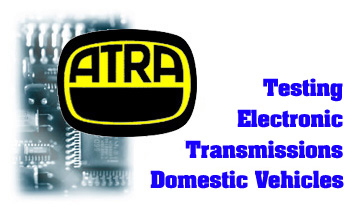|

|
Chapter 3
GM's 4T40E
|
Transmission Overview
The 4T40E is one of the few GM electronic transmissions that isn’t based on an earlier, hydraulically-controlled unit. It has two shift solenoids, a pulse width modulated converter clutch solenoid, and a force motor to control line pressure. The solenoids receive power whenever the key is on; the computer grounds the solenoids to energize them.
Terminal Identification
Here’s a breakdown of the individual connector terminals:


Shown from the terminal side of the transmission connectors.
Electronic Pressure Control
To check the electronic pressure control signal, connect your high-impedance voltmeter or signal monitor to the terminals shown.

Checking the Shift Pattern
Here’s how to connect your signal box to the transaxle connector, to check the signals from the computer to the transaxle:

Backprobe the terminals with the harness
connector still connected to the transmission.
This is the shift pattern you should see with your signal monitor:

The far right LED indicates the signal to the converter clutch (TCC) solenoid.
Forcing the Shift
Here’s the manual shift pattern you can expect with the transaxle in failsafe:

Here’s how to force the 4T40E transaxle to shift electrically:
First Gear
In first gear, only solenoid A receives ground.

Second Gear
To shift into second gear, the computer releases ground from solenoid A; neither solenoid is grounded.

Third Gear
To shift into third gear, the computer grounds solenoid B.

Fourth Gear
To shift into fourth gear, the computer grounds both shift solenoids; the gray line shows the connection necessary to apply the converter clutch.

 Never leave the TCC applied for more than a few seconds. Any longer could burn out the solenoid.
Never leave the TCC applied for more than a few seconds. Any longer could burn out the solenoid.
PAGE 36-37




![]() Never leave the TCC applied for more than a few seconds. Any longer could burn out the solenoid.
Never leave the TCC applied for more than a few seconds. Any longer could burn out the solenoid.